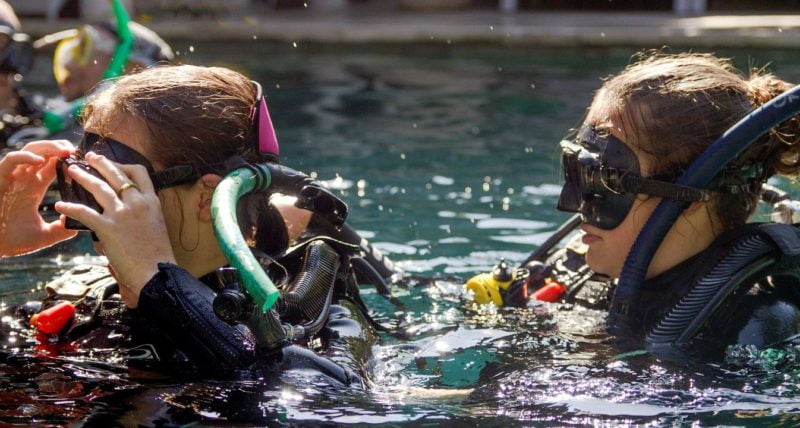Have You Ever Heard of Bioluminescence?
Bioluminescence triggered by a physical disturbance
On many night dives with in Padangbai Bali when we take the underwater torch off and move our arms around we can see spectacular play of light. Where does the bioluminescence come from and what is the cause of it? Bioluminescence is the production and emission of light by a living organism and is a type of chemiluminescence. We primarily see bioluminescence triggered by a disturbance, such as waves ormoving boat hull, but some animals often light up in response to an attack or in order to attract prey or mate.
Night Dive in Bali
Well generaly the bioluminescence is the production and emission of light by living organism and like with many things of this character we have to look for answers in chemistry. There is luciferin ( type of pigment) and luciferase ( an enzyme ) and these two fellas when they meet the mighty oxygen like to create a chemical reaction which produces light. The first guy luciferin is the source of the reaction, the fire starter, while the second luciferase is the catalyst, the red-bull of performance, which will speed the reaction up and increase the power of the light when it is needed.
As many scuba divers know bioluminescence occurs widely among some group of sea animals. Many deep see fish especially the angler fish has big fishing rod full in light and use it to lure the prey. But not all the undersea creatures use their lighting abilities for hunting purposes. There are some which use it as a defence or as a distraction. Imagine an inking octopus and than think of a squid which instead of ink spits out big cloud of really really small light-bowls and you will have a pretty much a good idea what I am talking about.
Chemistry of Bioluminescence not only in Bali
The chemical reaction that leads in to bioluminescence requires two chemicals:
- luciferin
- luciferase or photoprotein
Luciferin is the part that actually produces the light. In a chemical terminology and reaction, luciferin is called the substrate. The bioluminescent light and colour (yellow, greenish, or blueish) is a result of the arrangement of luciferin molecules. Some bioluminescent organisms do not synthesize luciferin by them selfs. But, hey try to absorb it through and from other organisms, either as food or they develope a symbioticrelationship. Some species of fish, for example, get luciferin from the shrimp they consume. Many sea animals, such as squid, keep bioluminescent bacteria in their light organs. The bacteria and squid form a symbiotic relationship.
It is estimated that more than 75% of deep-sea creatures produce their own light. For instance the anglerfish uses bioluminescent lures looking like a fishing rods, to attract prey towards their large mouths ful of sharp teeth. Closer to the ocean surface the bioluminescence is generaly created by a plankton called Noctiluca scintillans the sea sparkle.
Do not think that because we have optic cables to feed our hungry Facebook and Twitter accounts we were the first ones to communicate with the help of light. Squids, cattle fish and many other marine creatures managed this long time before us and love songs are always accompanied with a proper Rammstein concert style light show. To produce the light when diving in Bali one do not have to be big in fact even being microscopic is quite OK. Wave your arms or kick your fins on your night dive and you will turn on thousands of lights. It will dance around you like the sparks dance when the wind blows in to the camping fire. This show is product of marine microbes which are called phytoplankton. There is not many spots, more likely none, in our oceans where the bioluminescent of phytoplankton in the night could not be seen. So if you like to witness the magic all you need to do is book your night dive or do nightdiving as a part of a PADI Advance Open Wtaer Diver Course.
If you know more about this phenomena leave us some comment below. We will appreciate your feedback.
Photography was taken by Doug Perrine.


